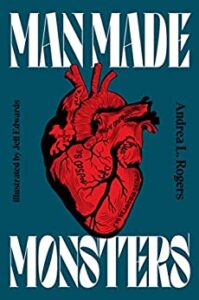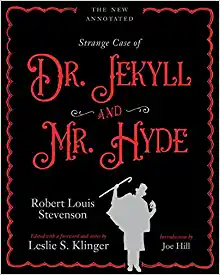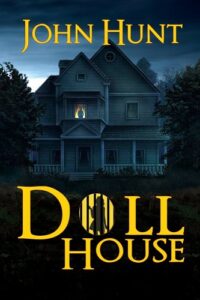
Man Made Monsters by Andrea L. Rogers, illustrated by Jeff Edwards
Levine Querido, 2022
ISBN-13: 9781646141791
Available: Hardcover, paperback, Kindle edition ( Bookshop.org | Amazon.com )
Cherokee writer Andrea L. Rogers makes her YA debut with Man Made Monsters with this 18-story anthology that traces one Cherokee family across time. She starts in the 1830s with the tribe forced off their land and the monster that follows them, and carries the family through to the future with a science fiction story. There are stories of commonly told supernatural monsters, like werewolves and vampires, but also monsters from the Cherokee tradition, such as Deer Woman, one of my new favorite legends. There are also very human monsters. Suicide, domestic violence, racism, school shootings, sexual assault, and indigenous dispossession are heavy topics in this book. Cherokee artist and language technologist Jeff Edwards includes fascinating artwork that accompanies the stories in this anthology.
While each of the stories in this anthology have something unique about them, a few of them became my favorites. “Man Made Monsters,” written as a series of letters, concerns a man playing Dr. Frankenstein looking for a means to create life from death. With the death of her little brother looming, Suzanna takes the man’s notes and research to heart. Something common for Victorian-era Gothic novels, Rogers uses this series of letters well to drive this story. I have a soft spot for Gothic novels, and I would have read a whole volume on this storyline alone.
In “Homecoming,” Rabbit Wilson’s older brother Joseph is slated to come home from the war with the other wounded “Cherokee boys.” While there is a ghost in this story, the most haunting vision is when Joseph arrives home.
“Me and My Monster,” set in 1969, centers on the short-lived relationship between the Goat Man and Gina after he saves her from being assaulted by a bad date. While I would not consider this a horror story, their tale ends in a tragedy of sorts.
In “Shame on the Moon,” another story set in 1969, Jimmy King is a self-conscious teenage werewolf football player. His sister, turned into a vampire by a rich white kid from an opposing team, led to his accidental transformation by an old friend. Something locally interesting for me is the mention of the song “Wichita Lineman.” I am a transplant to Wichita, and a few friends here have talked about the song in passing. Seeing this show up, I took the time to listen to it. I reread the story then, and it seemed to add that much more desperation to Jimmy’s search.
Sissy and Jisdu are stuck out in the cold in “Snow Day,” set in 1979. When they make it home after a difficult and painful trek, they are able to get into the old Cadillac in the closed up garage, where they turn it on, thinking the heater will keep them warm. While Jisdu sleeps, Sissy sees the ghost of her cousin, who tries to save their lives.
“Deer Women” is a new twist on the legend of Deer Woman. When Sali’s friend Lisa doesn’t show up for school, she and their other friend, Quanah, get worried. The trio is working on an art project centered around the legend of Deer Woman when she goes missing. After some expert sleuthing, they track Lisa who emerges from a drainpipe where she had been hiding. The girls may have discovered why other Native girls in the area have gone missing, and why it won’t happen again.
One of the futuristic stories, “I Come From the Water,” set in 2029, is told through multiple perspectives. In the story that comes just before this one, the band The Toadies are mentioned, and the title of this story is one of their songs, and one that happens to be favourite of mine. Rogers includes little things like this in her stories that are just genius. I recommend listening to the song after reading this one.
An interesting aspect of this book is that with the space in between the chapters, the reader can put together what happened with the family as the next story picks up. It’s an ingenious way to drive the overarching story. I thought it would be difficult to follow, given the massive time span, but it was surprisingly coherent, and I was never confused. It helped that at the beginning of each story, Rogers included pertinent names and dates. I think even without those added, I would have been able to follow the plot. Each story flows well into the next. Rogers is an author I will keep my eye on. She graduated with an MFA from the Institute of American Indian Arts in Santa Fe, and her work as been published in literary journals; in You Too? 25 Voices Share Their #METoo stories from Inkyard Press; in Approved: Intertribal Stories for Kids, and more.
I am not sure if the artwork created by Jeff Edwards was in their final versions as I read an ARC copy of Man Made Monsters, but I liked what I saw. Edwards is an award-winning Cherokee graphic artist and is a language activist who has worked for the Cherokee Nation for over 20 years. He attended Haskell Indian Nations University in Lawrence, KS, and deceived an Associate’s Degree in Liberal Arts and completed his Bachelor of Arts in Graphic Design at Northeastern State University in Tahlequah, Oklahoma.
Highly recommended.
Reviewed by Lizzy Walker







Follow Us!